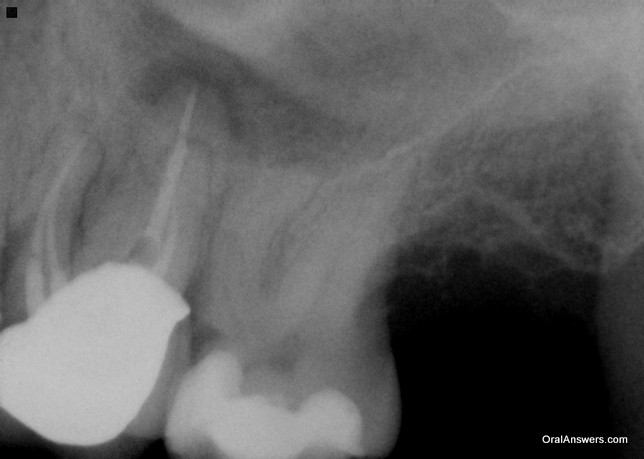
Figure reprinted from Importance of Dental Radiographs client educational poster. Note that the third premolar is only held in place by a calculus bridge (red arrow). Only 0.3 mm of ventral cortex remains (yellow arrow), which greatly predisposes the area to a pathologic mandibular fracture, especially during an extraction attempt. Intraoral dental radiograph of right mandibular first molar in a 5-pound dog with advanced periodontal bone loss (blue arrows). Therefore, there is minimal risk for jaw fracture during extraction of this tooth, provided that proper technique is utilized.įigure 4. In this case, a considerable amount of bone is present apical to the root apices (blue arrows). Intraoral dental radiograph of left mandibular first molar (309) of a 65-pound dog (B). Significant periodontal disease greatly worsens the risk for jaw fracture (see Figure 4, page 20). In this case, minimal bone apical to the tooth roots (red arrows ) is present, especially the mesial root of the mandibular first molar, which creates a high risk for iatrogenic jaw fracture during an extraction attempt, even if the bone is normal. Intraoral dental radiograph of left mandibular fourth premolar and first molar (308 and 309) of a 7-pound dog (A). The subsequent dental radiograph (B) reveals a significant bony defect (red arrow).įigure 2. The tight occlusion does not allow the periodontal probe to pass easily between the teeth, which may prevent a pathologic periodontal pocket from being identified. Intraoral image of right mandibular first and second molars (409 and 410) in a dog (A). 10,12 Preoperative dental radiographs can help practitioners avoid this complication.įigure 1. 12 In addition, this weakening significantly increases the possibility of iatrogenic fracture during extraction attempts ( Figure 4). Therefore, dental radiographs are important in assessing mandibular fractures. The periodontal aspect of these pathologic fractures is often missed on skull films, but can seriously complicate healing ( Figure 3). 9,10 In small breed dogs, the teeth, especially the mandibular first molar, extend across a much larger percentage of the bone of the mandible than in other breeds ( Figure 2). In these patients, periodontal disease can cause marked weakening of the mandible, creating risk for a pathologic fracture.


Radiographs are absolutely critical in cases of periodontal disease of the mandible of small and toy breed dogs (especially in the area of the canine and first molar teeth).7 Tight interproximal spaces are normal in the molar teeth, especially in small and toy breed dogs, 8 and dental radiographs should elucidate these pathologic pockets ( Figure 1B). Periodontal pockets can easily be missed due to narrow pocket width, a tight interproximal space ( Figure 1A), or ledge of calculus.4,5 However, there are 2 reasons dental radiographs are required for a complete evaluation: 6 Periodontal probing is a critical first step in the evaluation of periodontal disease. 1,2 By the age of 2, 70% of cats and 80% of dogs have some form of periodontal disease. Periodontal disease is by far the most common problem in small animal veterinary medicine.


 0 kommentar(er)
0 kommentar(er)
